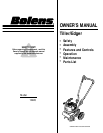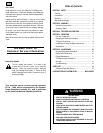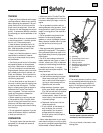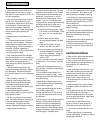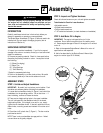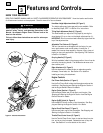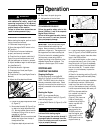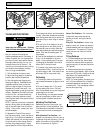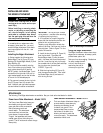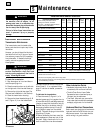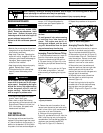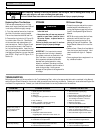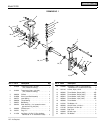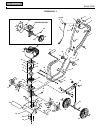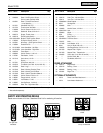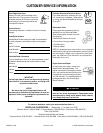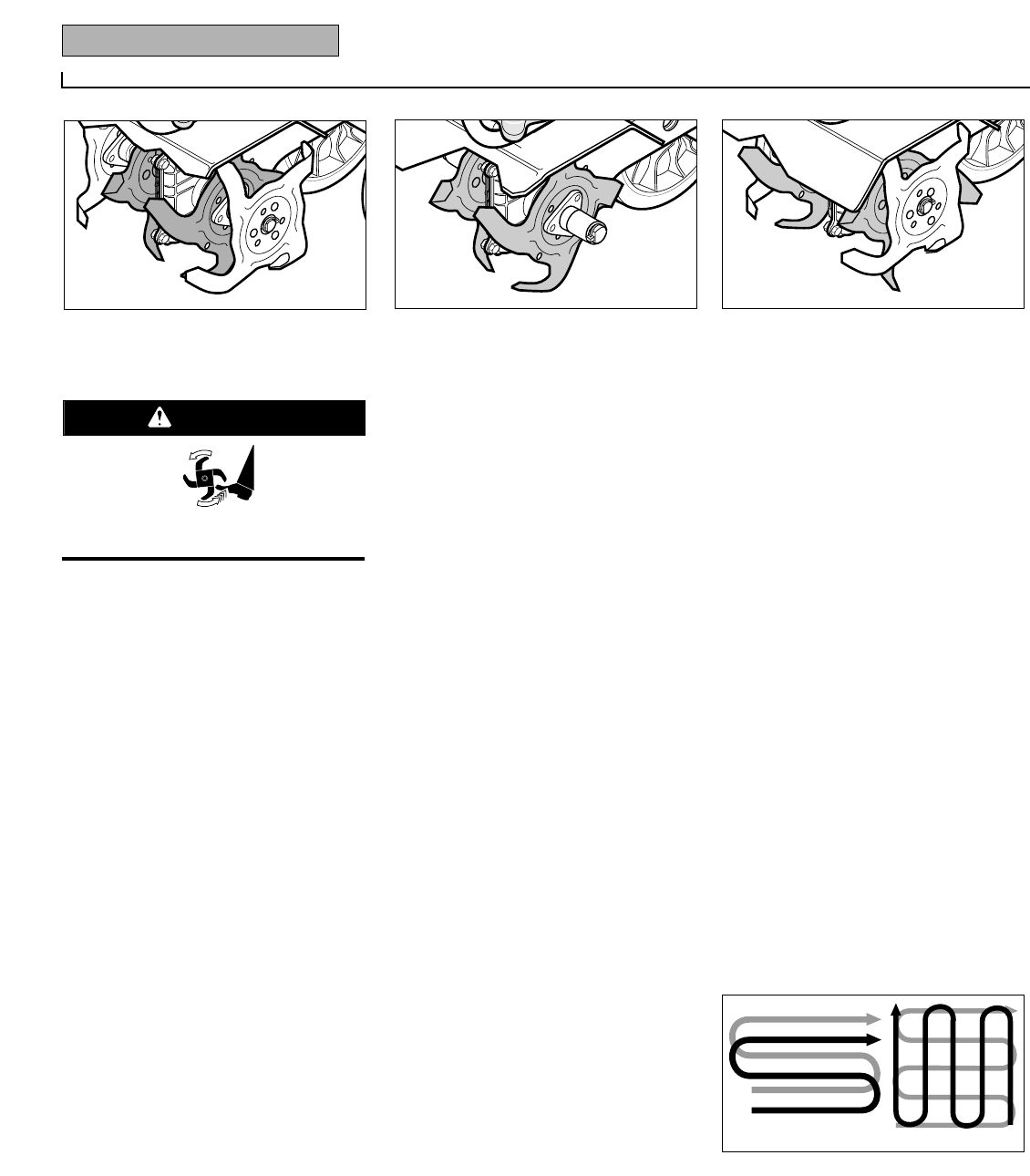
8 Section 4: Operation
TILLING AND CULTIVATING
Use your machine for busting sod,
preparing seedbeds and for cultivating. It
is easy to operate, but it is important that
you start out slowly and read this Section
thoroughly before putting it to use. Let
the machine do most of the work. The
tines will pull the machine forward, letting
you adjust forward speed by pressing
down or lifting the handlebars.
1. Roll the machine to the work area.
2. Adjust the tilling depth to the desired
position (see Pre-Start Preparation).
3. Start the engine (see Stopping and
Starting the Engine). Stand behind the
handlebar and push down on the han-
dlebar to raise the tines off the ground.
Squeeze the Throttle/Tines Lever – the
engine should speed up and the tines start
rotating. Release the Throttle/Tines Lever
to return to idle – the tines should stop
rotating or they may rotate very slowly.
Lowering them back to the ground should
stop any rotation.
NOTE: If the tines continue to rotate when
engine is idling, either the idle speed is too
high or the centrifugal clutch is malfunc-
tioning. If this occurs, contact your local
authorized dealer.
4. Squeeze the Throttle/Tines Lever to
start the tines rotating. Lower the tines to
begin tilling. Firmly hold the handlebar to
prevent the machine from moving forward
too quickly and to allow enough time for
the tines to dig deeply enough. Adjust
engine speed to suit the tilling conditions.
The rotating tines help to pull the machine
forward. Use slower speeds and a shallow
depth setting when learning to use the unit
and when tilling on hard, rough or uneven
ground.
5. Do not try to till too deeply in the first
pass through sod or very hard ground. If
the machine jumps or bucks, use a shal-
lower depth setting and reduce the engine
speed. With each succeeding pass, till
more deeply.
6. Press on the handlebars for shallower
tilling. Lift the handlebar to dig more
deeply. If the machine stays in one spot,
try swinging the handlebar from side to
side to start it moving forward.
7. For easier tilling, water very hard soil a
few days before tilling. Avoid working the
soil when soggy or wet. Wait a day or two
after heavy rain for the ground to dry.
Cultivating
1. Cultivating is shallow tilling that dis-
rupts weeds and aerates the upper crust of
soil.
2. Do not till deeper than 1"-2" to avoid
injuring nearby plant roots. Cultivate
often, so that weeds do not grow large and
cause tangling in the tines.
3. With planning, you can space the seed
rows far enough apart to allow room for
cultivating after the plants have grown.
Adjusting Tine Positions
Depending upon the tilling project, you
have a choice of three tine patterns. See
Tine Removal and Installation in Section 5
for information on how to rearrange the
tines.
Wide (Standard) Tine Positions – As
shipped from the factory, the unit is set up
for general tilling and cultivating. This tine
pattern (the maximum tilling width) uses
all four tine sections (A, Figure 7).
Narrow Tine Positions – For a narrower
tilling width, remove the outside tine
section on the left- and right-sides (B,
Figure 7).
Stony Soil Tine Positions – When tilling
deeply in stony soil, stones may become
jammed between the inner tines and the
machine hood. This pattern (C, Figure 7)
swaps the two inner tines to minimize
jamming.
Tilling Patterns
1. To make seedbeds, go over the same
path twice in the first row, then overlap
one-half the machine width on each suc-
cessive pass until all rows are tilled twice
(D, Figure 8).
2. Make a second pass at a right angle
across the original passes. Again, overlap
each pass (E, Figure 8). Hard ground may
take three to four passes before the
desired depth is achieved.
NOTE: For small gardens, overlap by one-
half (1/2) the machine width, followed by
successive passes at one-quarter (1/4)
machine width. This overlapping method
assures thorough tilling.
Figure 7: Tine patterns.
B
C
A
Keep away from rotating tines. Rotating
tines will cause serious personal injury.
WARNING
Figure 8: Recommended Tilling Pattern.
D
E



